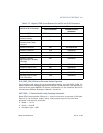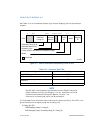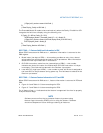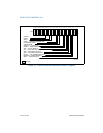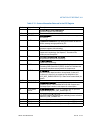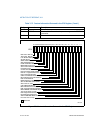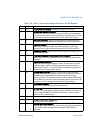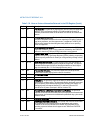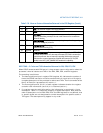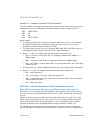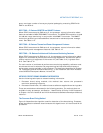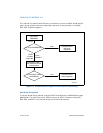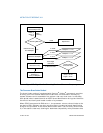
Vol. 2A 3-177
INSTRUCTION SET REFERENCE, A-M
CPUID—CPU Identification
INPUT EAX = 2: Cache and TLB Information Returned in EAX, EBX, ECX, EDX
When CPUID executes with EAX set to 2, the processor returns information about the
processor’s internal caches and TLBs in the EAX, EBX, ECX, and EDX registers.
The encoding is as follows:
• The least-significant byte in register EAX (register AL) indicates the number of
times the CPUID instruction must be executed with an input value of 2 to get a
complete description of the processor’s caches and TLBs. The first member of the
family of Pentium 4 processors will return a 1.
• The most significant bit (bit 31) of each register indicates whether the register
contains valid information (set to 0) or is reserved (set to 1).
• If a register contains valid information, the information is contained in 1 byte
descriptors. Table 3-17 shows the encoding of these descriptors. Note that the
order of descriptors in the EAX, EBX, ECX, and EDX registers is not defined; that
is, specific bytes are not designated to contain descriptors for specific cache or
TLB types. The descriptors may appear in any order.
25 SSE SSE. The processor supports the SSE extensions.
26 SSE2 SSE2. The processor supports the SSE2 extensions.
27 SS Self Snoop. The processor supports the management of conflicting memory
types by performing a snoop of its own cache structure for transactions
issued to the bus.
28 HTT Multi-Threading. The physical processor package is capable of supporting
more than one logical processor.
29 TM Thermal Monitor. The processor implements the thermal monitor automatic
thermal control circuitry (TCC).
30 Reserved Reserved
31 PBE Pending Break Enable. The processor supports the use of the FERR#/PBE#
pin when the processor is in the stop-clock state (STPCLK# is asserted) to
signal the processor that an interrupt is pending and that the processor
should return to normal operation to handle the interrupt. Bit 10 (PBE
enable) in the IA32_MISC_ENABLE MSR enables this capability.
Table 3-16. More on Feature Information Returned in the EDX Register (Contd.)
Bit # Mnemonic Description



